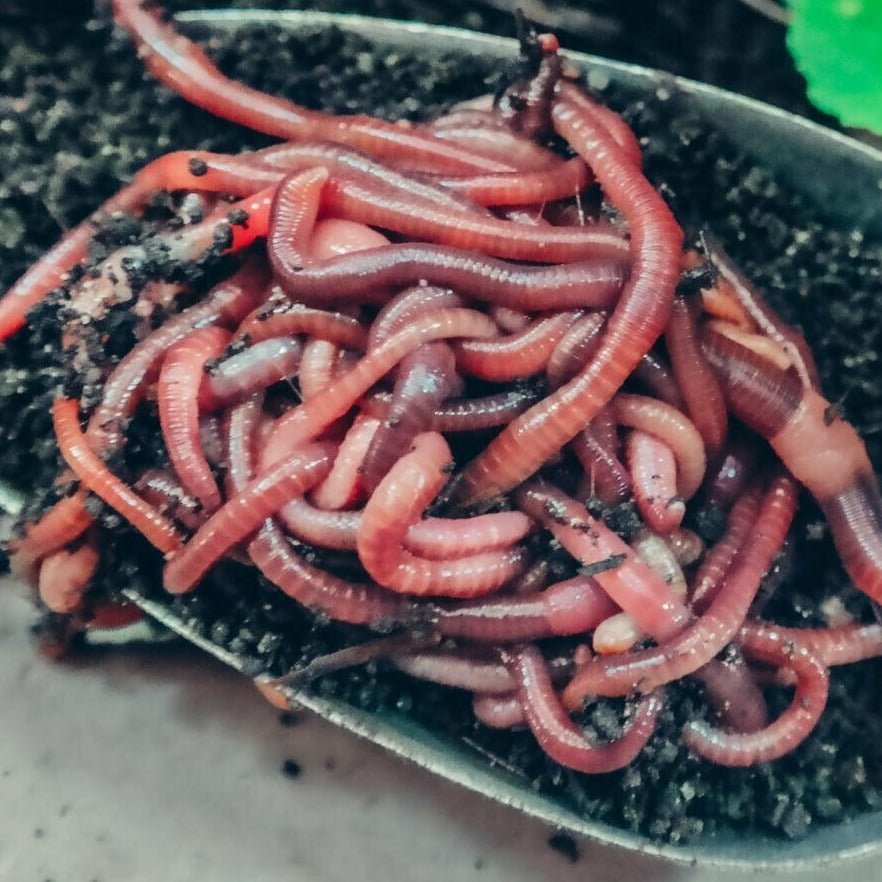Take Care of Your Lawn with the Best Products from Lake Hickory Bait
Take Care of Your Lawn with the Best Products from Lake Hickory Bait
Blog Article
Open the Tricks of Red Wigglers: Your Guide to Composting Success
The integration of red wigglers into composting techniques presents a substantial opportunity for enhancing dirt health and wellness and promoting sustainability. Understanding their demands and behaviors is important for enhancing their capacity, from setting up an appropriate worm bin to feeding them the appropriate materials.

What Are Red Wigglers?
(Red Wiggler Express)Red wigglers, scientifically referred to as Eisenia fetida, are a varieties of earthworm largely utilized in composting because of their amazing capability to decompose raw material efficiently. These worms are characterized by their reddish-brown coloration and a fractional body, commonly gauging in between 3 to 4 inches in length. Unlike various other earthworm species, red wigglers flourish in abundant, organic settings, making them suitable for vermicomposting systems.
Belonging To North America, they are typically found in decomposing leaves and compost heap, where they play a critical duty in nutrient recycling. Their adjustment to residing in a wet, cardio atmosphere enables them to eat large quantities of organic waste, breaking it down into nutrient-rich castings that improve soil health.
Red wigglers replicate quickly, with a single worm capable of generating a number of cocoons each week, each including multiple hatchlings. Recognizing the biology and actions of red wigglers is vital for maximizing their capacity in composting applications.
Advantages of Making Use Of Red Wigglers
Harnessing the power of red wigglers in composting provides numerous advantages that improve soil wellness and promote sustainable waste management. These amazing microorganisms successfully damage down organic issue, changing kitchen scraps and yard waste into nutrient-rich vermicompost. This completed product is remarkably helpful for plant development, as it boosts dirt framework, boosts wetness retention, and improves nutrition accessibility.

(Red Wiggler Express)In addition, the existence of red wigglers in your composting system can speed up the composting procedure, creating premium compost in a portion of the moment contrasted to traditional methods. The castings produced by these worms are likewise bursting with useful bacteria that additionally enrich the soil community.
Establishing Your Worm Container
Producing an effective worm bin is a simple process that can substantially boost your composting efforts. Worm bins can be made from plastic storage space bins, wood boxes, or commercially offered worm containers.
Next, prepare the bed linens product, which works as the worms' habitat. A mix of shredded paper, cardboard, and coconut coir works well, providing a comfortable atmosphere for the worms. Go for a bed linens deepness of regarding 4-6 inches. Moisten the bed linen lightly, guaranteeing it appears like a damp sponge without excess water merging near the bottom.

Feeding Your Red Wigglers
To make certain the health and performance of your red wigglers, it is necessary to supply them with a balanced diet that meets their nutritional needs. Red wigglers flourish on a diverse range of natural products, which not only provide needed nutrients yet also promote efficient composting.
Start by including kitchen scraps such as veggie peels, fruit cores, and coffee premises. Prevent citrus fruits, onions, and garlic, as these can be detrimental to worm health. In addition, present shredded paper, cardboard, and completely dry leaves to create a well-aerated setting.
Feeding frequency ought to be checked; generally, worms can consume half their body weight in food weekly. It is vital to prevent overfeeding, as excess food can cause unpleasant smells and draw in insects. An excellent method is to include food in little amounts, allowing worms to refine it before presenting more.
Maintaining wetness degrees is also vital; the bed linens needs to perspire yet not soaked. Red Wiggler Express Be sure to consistently inspect the temperature and pH levels of the bin to guarantee an optimal setting for your red wigglers, inevitably enhancing their composting effectiveness.
Harvesting and Making Use Of Compost
An effective composting process with red wigglers finishes in the rich, dark garden compost referred to as vermicompost, which can substantially enhance soil health and wellness and plant development. Harvesting this nutrient-dense product typically occurs every 3 to six months, relying on the dimension of your system and the amount of organic matter being processed.
To gather, gently different the garden compost from the worms and any type of undecomposed products. One effective technique includes moving the materials of the container to one side and including fresh bedding and food to the vacant space, encouraging the worms to migrate. After a few days, the compost can be gathered from the opposite side.
It is necessary to make use of vermicompost correctly to optimize its benefits. By incorporating vermicompost right into your horticulture routine, you not just reuse organic waste yet also develop a successful ecological community that sustains lasting horticulture methods.
Conclusion
In recap, red wigglers work as exceptional allies in composting efforts, changing organic waste into nutrient-rich vermicompost (Red Wiggler Express). Their unique organic qualities and efficient waste processing capacities contribute considerably to lasting horticulture practices. By recognizing the ideal problems for their habitat, feeding demands, and garden compost harvesting techniques, gardeners can boost soil health and wellness and promote plant vigor. Embracing vermicomposting not only reduces garbage dump waste but also cultivates an extra ecologically responsible technique to gardening and resource administration.
Report this page